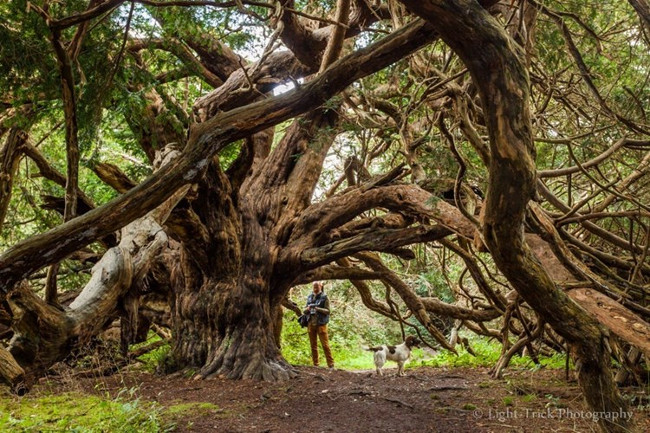Kingley Vale National Nature Reserve in Southern England is famous for its witch forest of nearly 1,000-year-old yew trees with strange, mysterious and horrifying shapes that make people scared and curious.

The yew trees in this forest are gigantic in size with huge trunks, branches, and secondary roots. Making many people feel like they are entering a fairy tale forest, home to dark witches.

In fact, the witchwood at Kingley Vale is one of the largest and most magnificent yew forests in Western Europe.

Some of the juniper trees here are even over 1000 years old.

The ancient yew trees have strange shapes with twisted, distorted trunks, giant branches twisting into the ground like snakes, and bulging secondary roots emerging.

Under the shade of the giant, strange yew tree there was no other vegetation, not even grass could grow.

Cedars typically live between 400 and 600 years, but some trees can live longer. The age of cedar trees is difficult to determine because the tree rings are not consistent, and some trunks are hollow.

Yew trees have a special ability: when exposed to unfavorable conditions, they can stop growing for centuries. Until the environment once again becomes suitable enough to awaken the tree, the yew tree will grow again.

The age of the giant yews at Kingley Vale is difficult to determine, largely based on conjecture. According to legend, the trees, which have all turned into wood spirits, are between 5,000 and 9,500 years old. However, according to scientists, this figure is unrealistic.

According to legend, these yew trees were planted to commemorate the heroic battle between the Vikings and the Anglo Saxons in 859.

Today, it is very difficult to see ancient yews like those at Kingley Vale, as most of the ancient yews across Europe were felled after the 14th century when people preferred walking sticks made from straight-grained yew, a wood that was popular with royalty.





